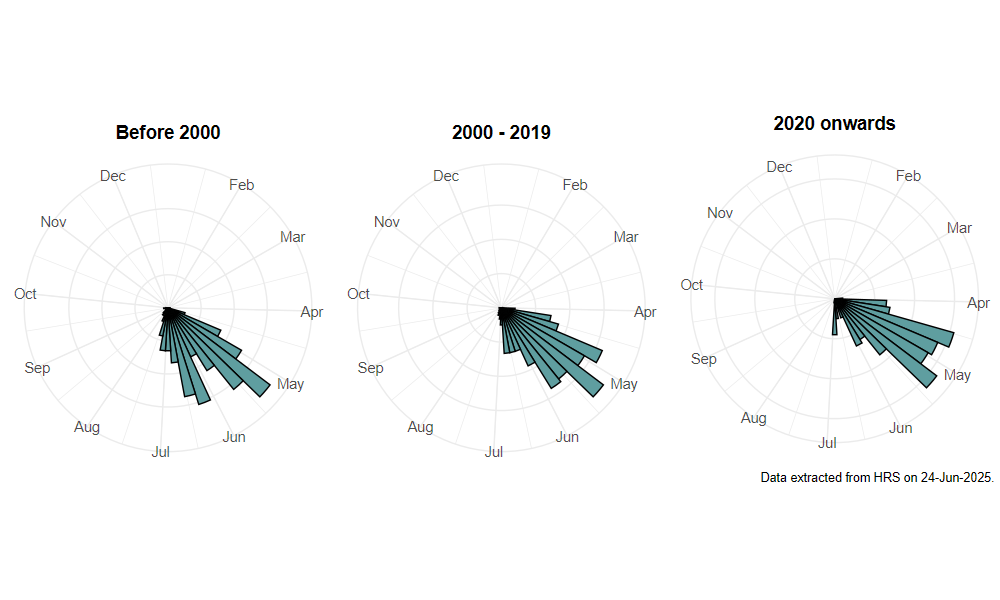Neoascia meticulosa (Scopoli, 1763)
Identification
Identification difficulty = 3. ![]()
![]() according to Ball & Morris, 20241
according to Ball & Morris, 20241
Synonymy
Neoascia aenea (Meigen, 1822) in Coe(1953)2 and Kloet & Hincks (1976)3.
Biology
Both larvae and puparia have been found on Greater Reedmace Typha latifolia; the larva is reported from between the submerged leaf sheaths and puparia on plants growing in floating mats of vegetation. It is normally found among lush vegetation such as Greater Reedmace and Reed Sweet Grass Glyceria maxima, fringing wetlands. Adults will visit a variety of flowers fringing larval habitat.
Flight period
The following plots show the number of unique records per week excluding those reported to be of immature stages.

Distribution
This is a widely distributed, mainly lowland species that appears to be commoner in southern regions.

Trends
The following plots show the Frescalo TFactor vs year and a map of the rescaled frequency (all records) for the species.
-
Ball, S., & Morris, R. (2024). Hoverflies of Britain and Ireland. WILDGuides (3rd ed.). Oxford: Princeton University Press. ↩
-
Coe, R. (1953). Diptera: Syrphidae. Handbooks for the Identification of British Insects, 10(1), 1–98. ↩
-
Kloet, G., & Hinks, W. (1976). A check list of British insects. 2nd Ed. Part 5: Diptera and Siphonaptera. Handbooks for the Identification of British Insects, 11, 1–139. ↩